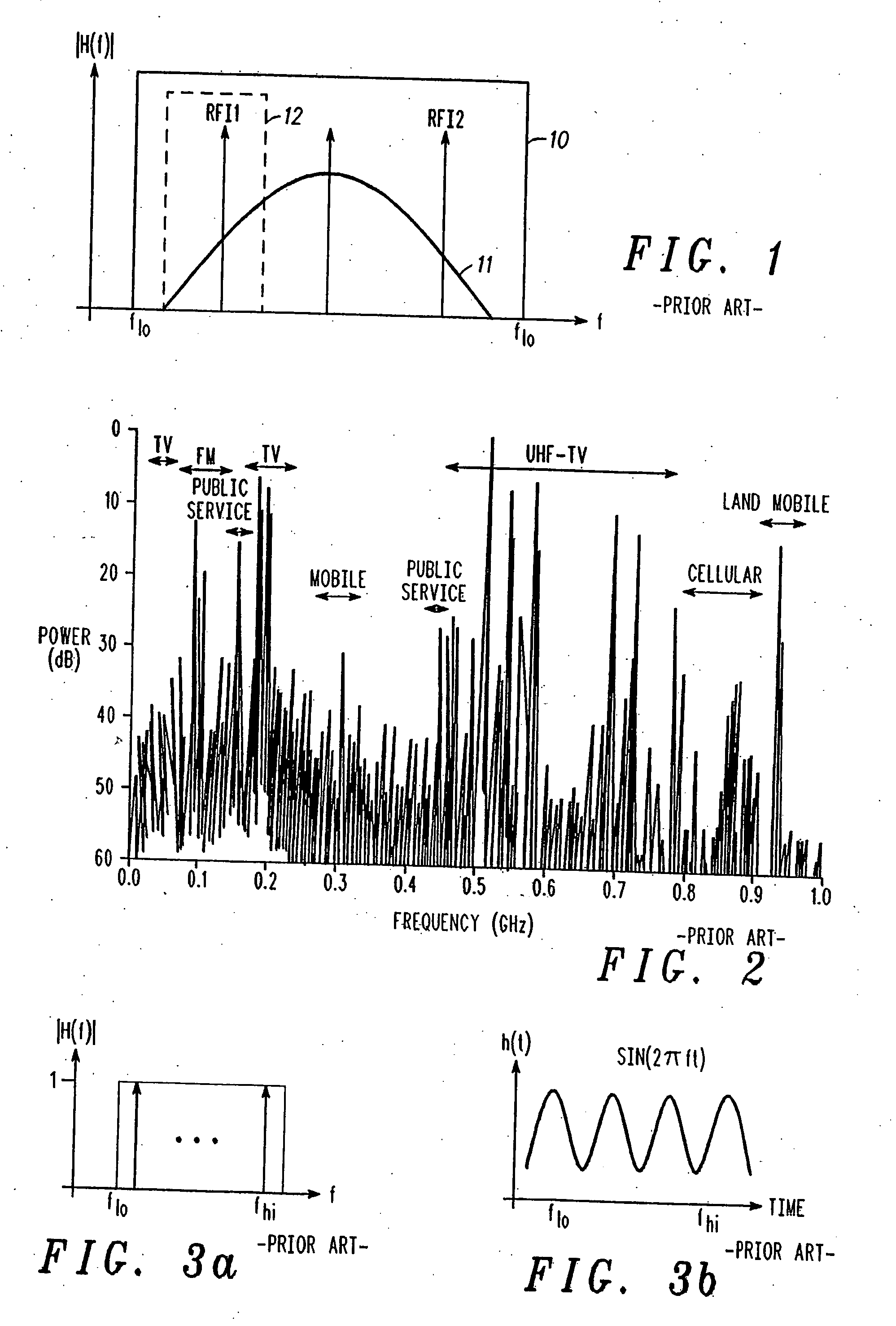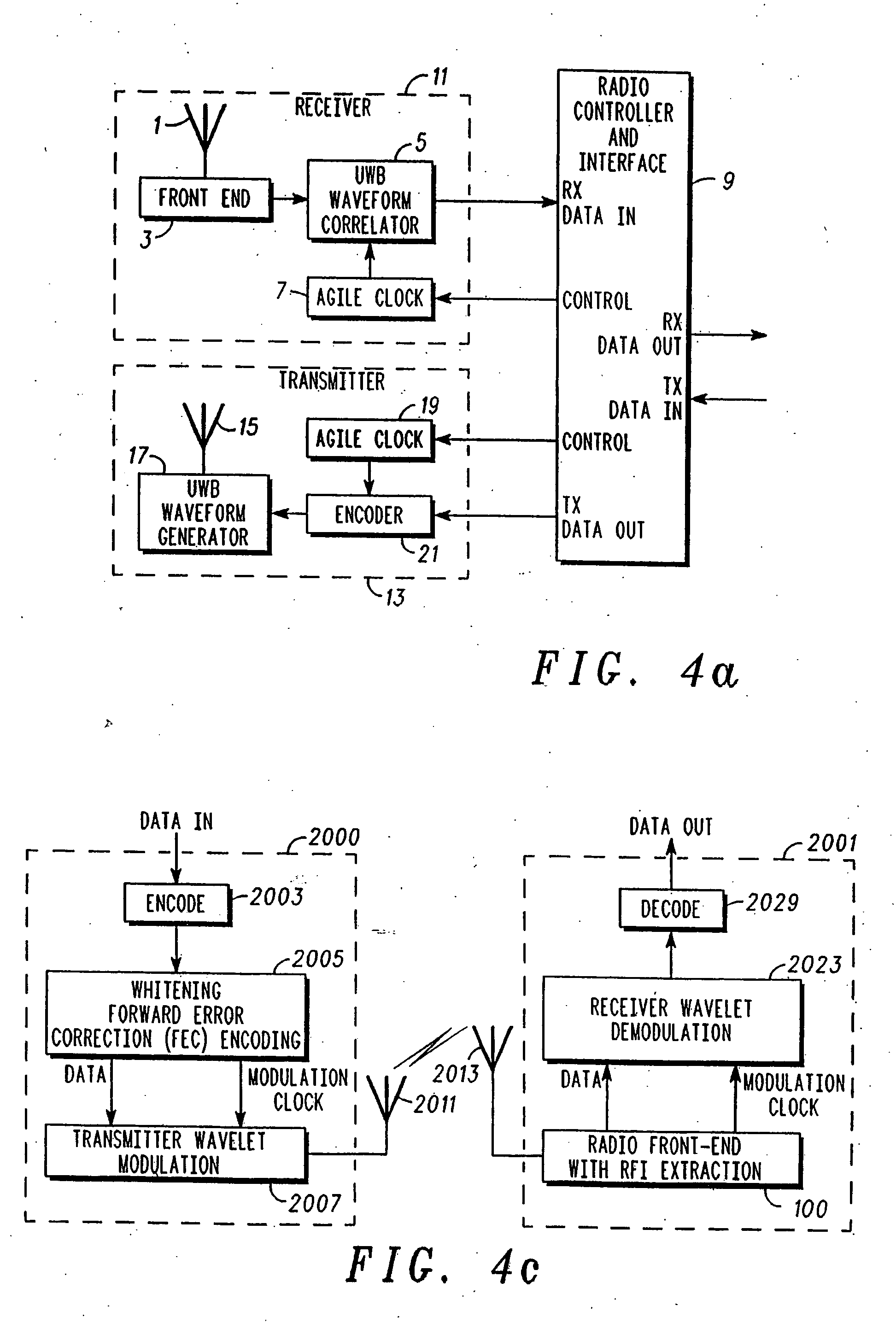Analog signal separator for UWB versus narrowband signals
a technology of analog signal and narrowband, applied in the field of analog signal separator, can solve the problems of reducing reception quality, degrading the reception of intended signals, and inconvenient techniques
- Summary
- Abstract
- Description
- Claims
- Application Information
AI Technical Summary
Benefits of technology
Problems solved by technology
Method used
Image
Examples
Embodiment Construction
[0050] Referring now to the drawings, FIG. 4a is a block diagram of an ultra-wide band (UWB) transceiver. In FIG. 4a, the transceiver includes three major components, namely, receiver 11, radio controller and interface 9, and transmitter 13. Alternatively, the system may be implemented as a separate receiver 11 and radio controller and interface 9, and a separate transmitter 13 and radio controller and interface 9. The radio controller and interface 9 serves as a media access control (MAC) interface between the UWB wireless communication functions implemented by the receiver 11 and transmitter 13 and applications that use the UWB communications channel for exchanging data with remote devices.
[0051] The receiver 11 includes an antenna 1 that converts a UWB electromagnetic waveform into an electrical signal (or optical signal) for subsequent processing. The UWB signal is generated with a sequence of shape-modulated wavelets, where the occurrence times of the shape-modulated wavelets ...
PUM
| Property | Measurement | Unit |
|---|---|---|
| output impedance | aaaaa | aaaaa |
| frequency | aaaaa | aaaaa |
| time | aaaaa | aaaaa |
Abstract
Description
Claims
Application Information
 Login to View More
Login to View More - R&D
- Intellectual Property
- Life Sciences
- Materials
- Tech Scout
- Unparalleled Data Quality
- Higher Quality Content
- 60% Fewer Hallucinations
Browse by: Latest US Patents, China's latest patents, Technical Efficacy Thesaurus, Application Domain, Technology Topic, Popular Technical Reports.
© 2025 PatSnap. All rights reserved.Legal|Privacy policy|Modern Slavery Act Transparency Statement|Sitemap|About US| Contact US: help@patsnap.com



